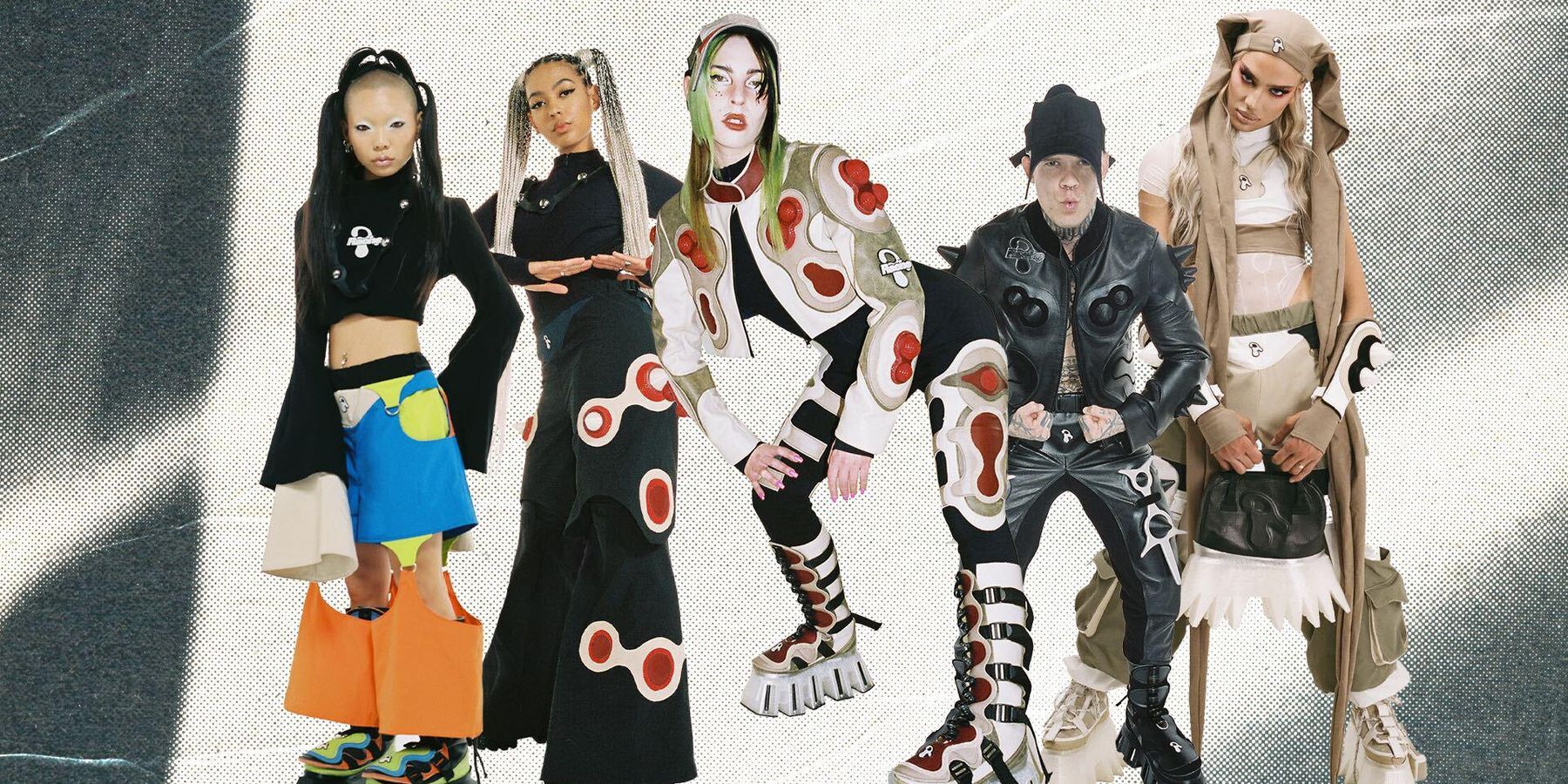
Fashion
Ravewear Brand Racine Is a 'Magical Quantum Experiment'
Story by Njegos Todic / Photography by Boris Halas
06 July 2022

Racine is one hell of a psychedelic trip operating under the guise of a fashion brand.
Even though the "inc." is still fresh, the brand found itself in Lil Nas X's wardrobe and on Dorian Electra's My Agenda Tour stage, all before even blowing out their first candle. Mostly known for their towering 3D-printed platforms, Racine explores streetwear and ravewear with childlike curiosity and playfulness. Having mostly produced custom pieces, they are officially releasing their debut ready-to-wear collection on a new website.
Rooted in Montreal, the brand is Emile Racine's brainchild — an evolution of the final project he presented for his industrial design bachelor studies. To him, it is more like a dream factory — a place where one's eccentric wishes can be made possible through endless experimentation.
PAPER sat down with the young designer in his workshop, amidst the white noise of sewing machines and 3D printers, to discuss collections, Los Angeles and demonic music label deals.
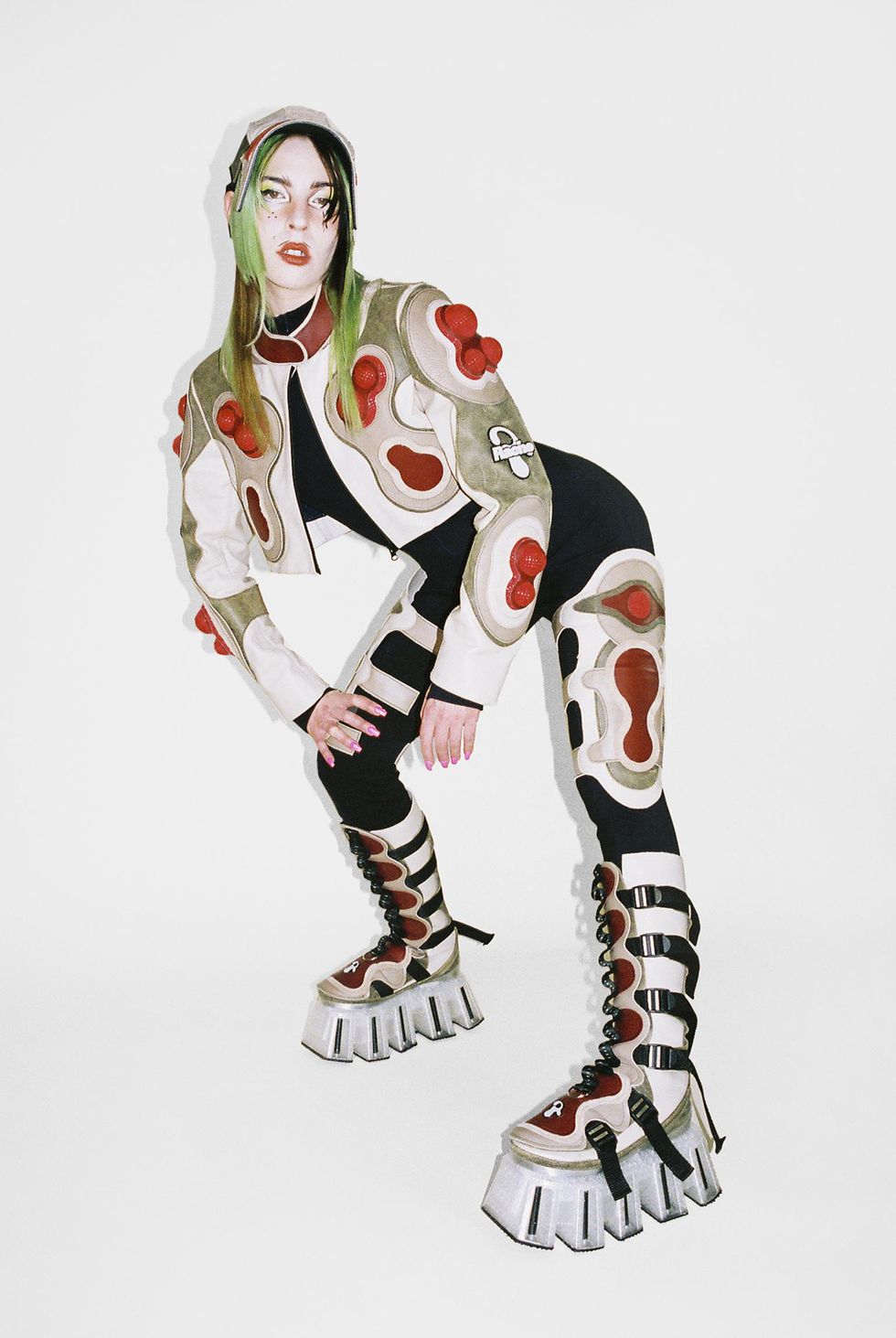
Dorian Electra
What was the process of developing the debut collection?
The debut collection is the first congealment of the aesthetic — a statement on how far we’ve come and where we are now. Up to this point, we mainly did custom orders for clients that commissioned full fits, shoes and accessories that we developed often in less than a week to accommodate their needs. Therefore, we were confident that we could make a five-look collection with a small budget and four workers in less than a month.
The phase of research and development often involves 3D printing, silicone mold making, resin casting, CNC machining and laser cutting. Mastering those processes gives us the freedom to craft hard or semi-rigid components that we integrate with the custom garments. I like to tell our clients that we can make anything. Most of them give us a lot of freedom and we really appreciate that.
Racine recently left its hometown of Montreal for a quick dip in Los Angeles. What did you hope to accomplish there and why LA?
We have gotten much interest remotely since most of our clients are from LA and it felt like we had to come say hi. It was also a good excuse to create our first collection, to go there to meet people and to get some pictures. Montreal’s a small market and LA is kind of a creative hub in North America.
Why do you think your brand resonates so much with Americans?
I feel like Americans love flashy and extra stuff — strong visuals. We offer that, but with a focus on craft.
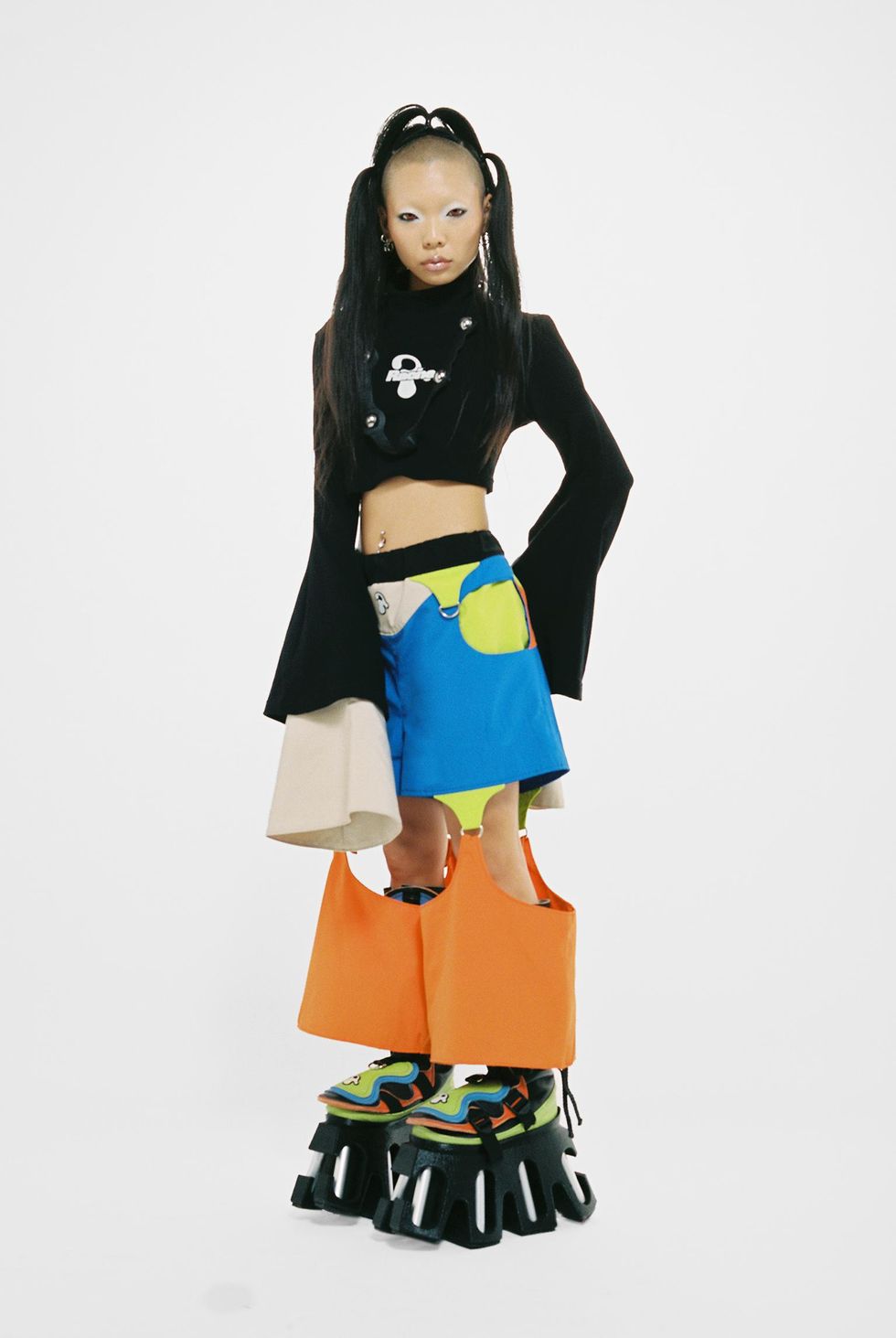
Princess Gollum
What was it like to shoot in LA?
LA is a big city, but it didn’t really feel that way when we were on the spot and encountered the same people multiple times a week. Because the rave scene is so tight, it was easy to connect organically with the artists we wanted to work with. Half of the shoots were planned before the trip and the rest was improvised as we met people there.
We came in as a crew of friends working together and we wanted to keep that same dynamic while collaborating with the artists. We tried leaving as much freedom as possible for them to come up with outfit combos and their own artistic direction. My friend Joanne [Pollock] would also help me with the styling while Boris [Halas] was taking the pictures.
Is collaboration an important part of your creative process?
Yeah. Since we’re a small team, everyone’s really involved and brings a part of themselves to the table. Despite how chaotic things can be, people are fully committed and want to help. It’s kind of like having this baby that’s so vulnerable and the community comes together to raise it collectively. Some people see the full potential of this project and that’s why they stick around. We often know where we’re going, but rarely how we’ll get there. It leads to people coming up with creative solutions.
Any interesting anecdotes from your time there?
Yeah, actually: One of the people in our crew had to leave because she thought she was in danger of having her soul snatched. She would on many instances encounter sketchy people talking about a demon named Amon that would try to sign her to big labels. She’s fine, though.
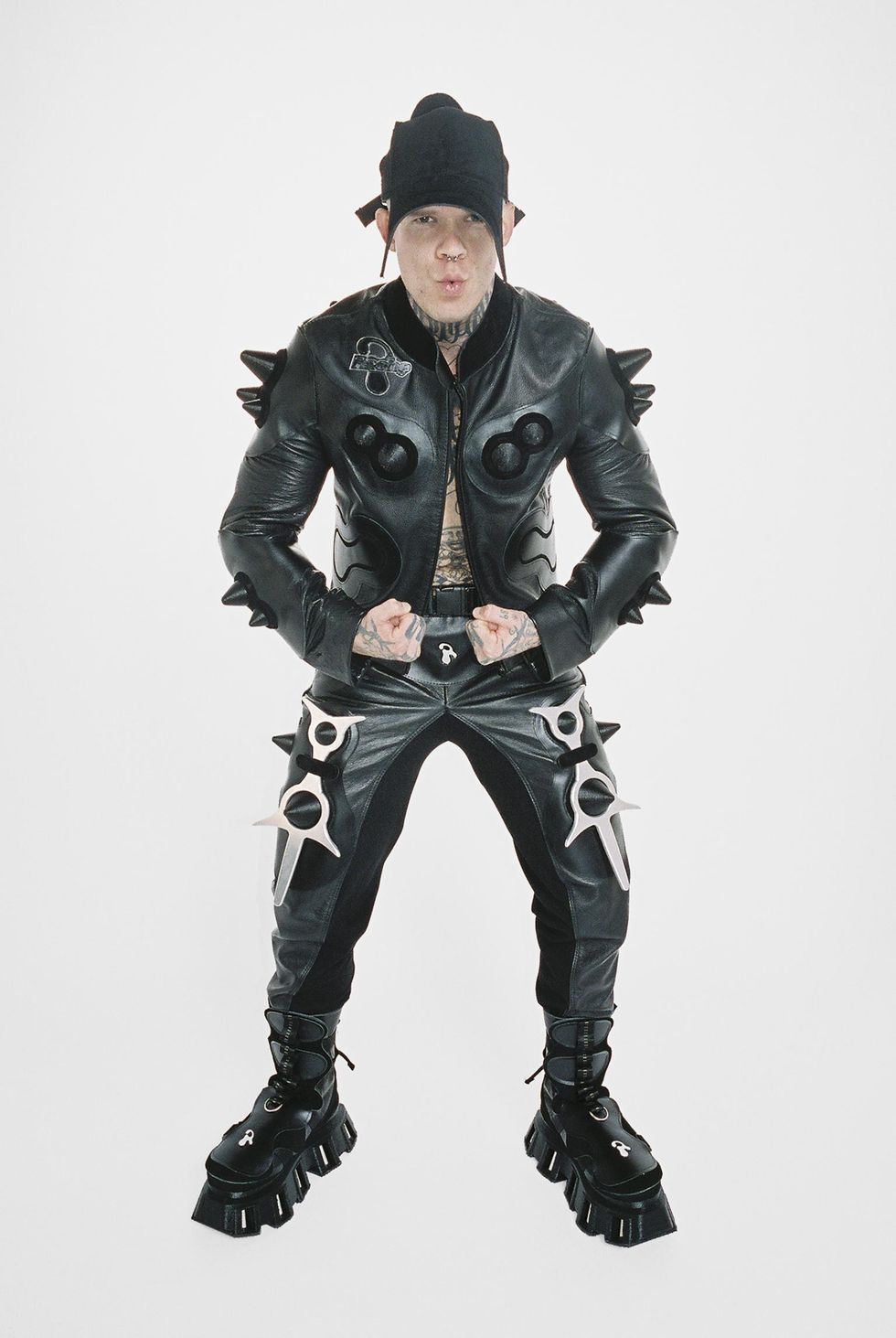
Lil Texas
It’s no surprise that a major part of your customer base is composed of musical artists when the brand itself is heavily influenced by rave culture and hip hop, with you also DJing on the side. Is the idea of performance something that informs your creative decisions?
I feel like we’re all kind of role-playing in a way, because we all have different characters inside us that come out in certain situations. The Racine clothes are informed by the most extravagant version of myself — the character that comes out when it’s "demon time." I try to offer that power to other people, so they can also feel elevated and borrow energy from the love and magic we put in those clothes.
I definitely felt that when I recently wore a full Racine fit at a party. I was also surprised at how comfortable and fluid it was to dance in. Is there something that always surprises people when they wear your products?
The way you dress influences how you walk and how you dance. I try to think of different elements, different personalities. Like when I have long large sleeves, I’m more fluid in my movements, as with my metal boots, I just want to stomp away. People are always surprised at how comfortable the shoes and clothes are. This one guy put my boots on once and started crying. He was saying that he felt the weight of my being, and that he could literally and metaphorically walk in my shoes. When people put my jackets on, I see their demeanor change immediately. A lot of people told me they feel powerful. I personally like how the spikes protect my personal space when I’m at a packed venue.
It’s amazing how quickly Racine got noticed. What do you attribute to the brand’s early success?
Well, it wasn’t an overnight thing, but it definitely picked up more attention in the last year. I made my first shoe in 2017 at Elisava University in Barcelona. I then completed a year-long research project in Montreal focused on circular economy and footwear design, and spent the next three years working as a freelance designer before incorporating Racine in 2021.
In parallel back in 2019, I had the time to sit and to expand my universe into a fashion line with the mentoring of fashion incubator Lignes de Fuite’s creator, Milan Tanedjikov. The program was interrupted by the pandemic and I had to wait two years before being able to complete a full outfit. I met some skilled people last year that helped me improve my craft. The last collection was made with the assistance of Charlotte Capistran and Joshua Boudreau AKA Denora, who also collaborated on one of the looks.
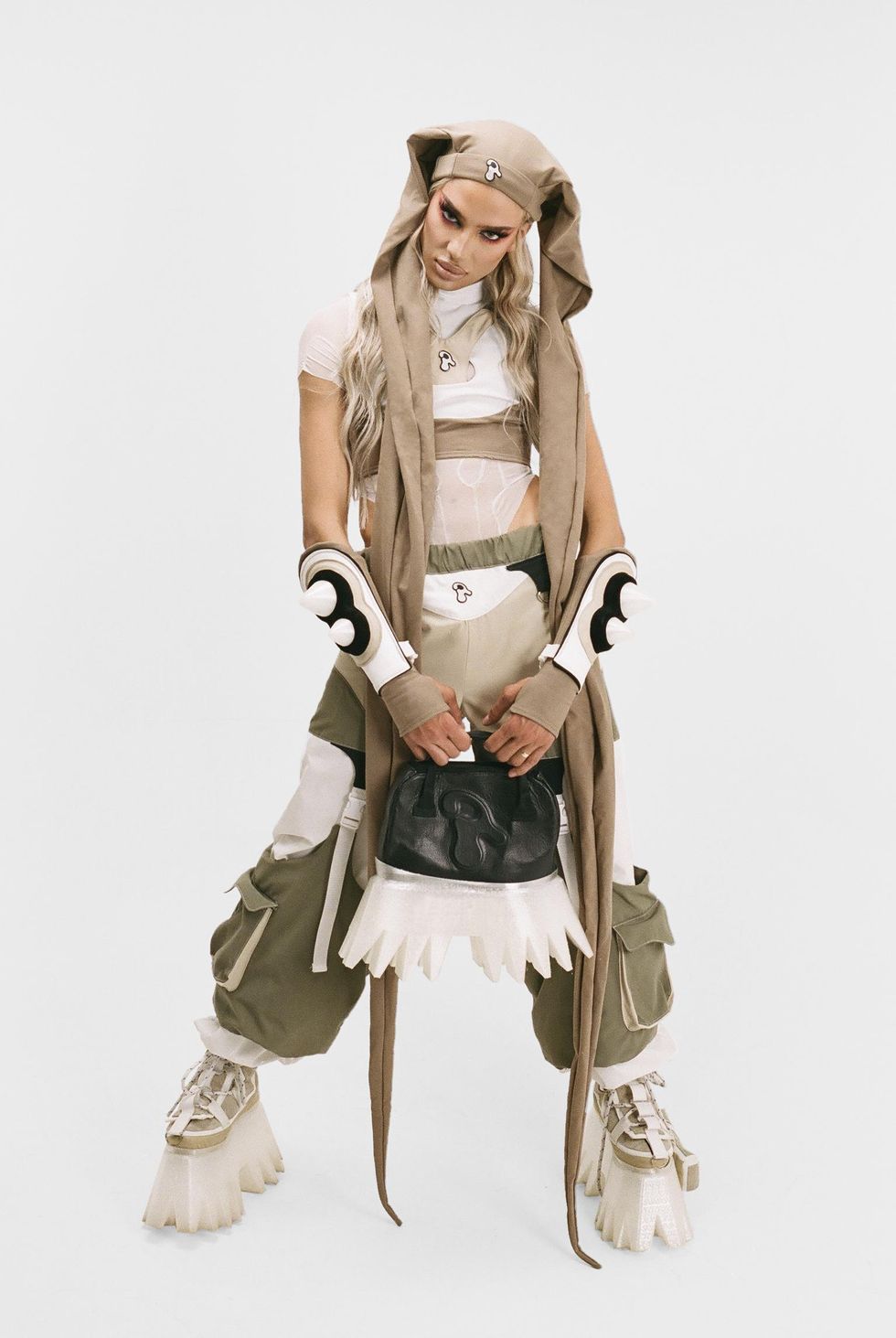
Paolo Perfección
Racine has a strong psychedelic-infused visual identity. You also mentioned in previous interviews that you were inspired by sacred geometry and divine archetypes. You’re a rather spiritual person, right?
Yeah, I come from a very rational background so spirituality came later in my path. It changed a lot of things in my life. It’s a bumpy ride, but it’s worth the trip.
Are there any parallels between your own spiritual journey and your creative process?
Most of the time, they are codependent. There’s so much to say, but I think that a lot of us have been awakening to a new paradigm leaving naive realism and materialism behind. The game of life becomes more interesting when you are aware of your multidimensional consciousness as a cosmic self. It sometimes feels like we’re running a magical quantum experiment more than a fashion business. I might also be a bit psychotic, but either way it’s a crazy experience.
How do you reconcile this idea of immateriality with something as material as fashion?
It’s about finding the refined version of a specific emotion that feels like home and manifesting it in the material world. I like exposing myself to a lot of new things and embodying different archetypes to sort out what resonates with my being. I try channeling this specific frequency that feels like heaven to me and I amplify it. I think it’s a fancy way to explain what artists instinctively do.
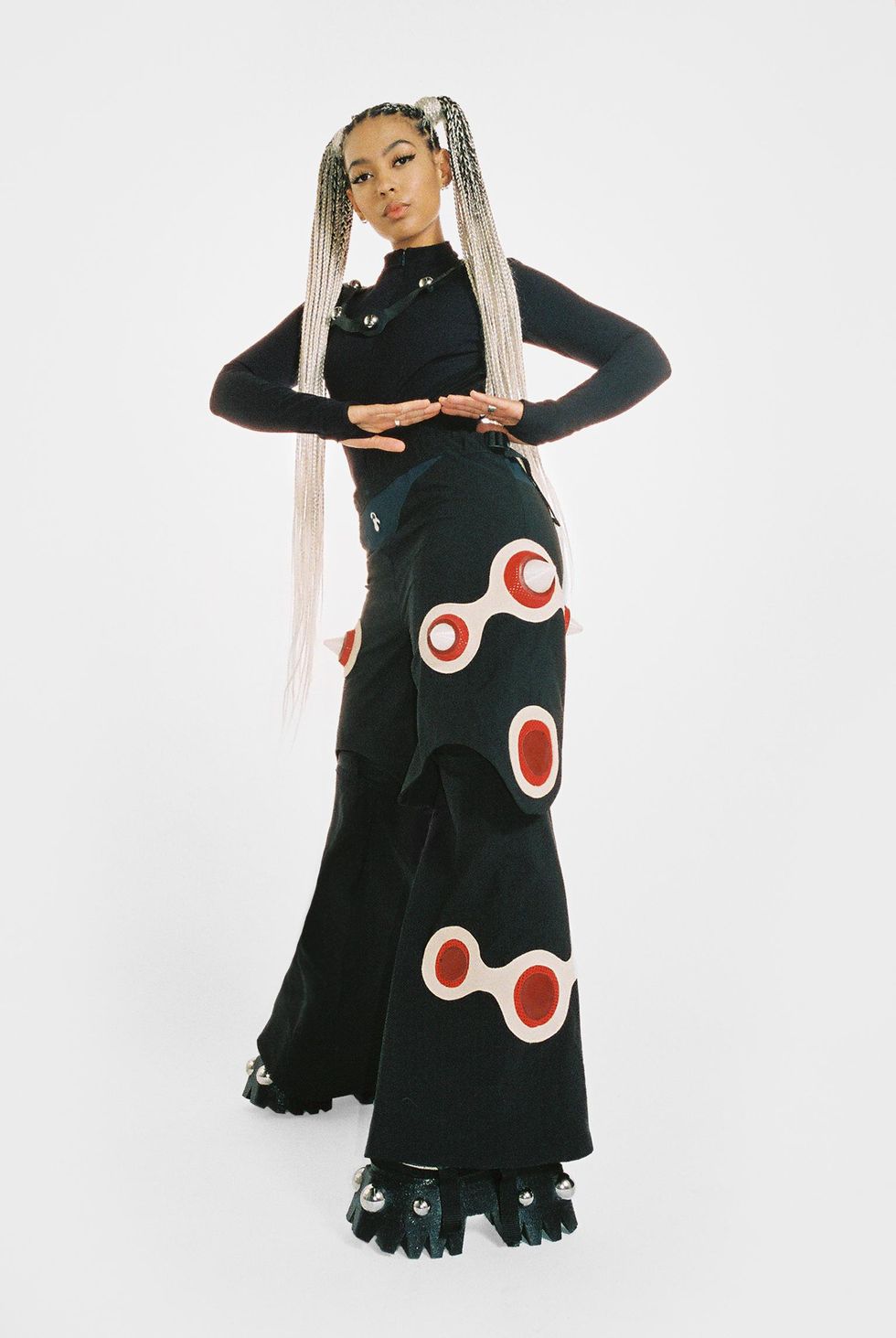
Dizzy Fae
Photography: Boris Halas